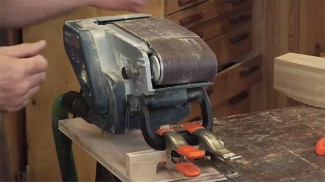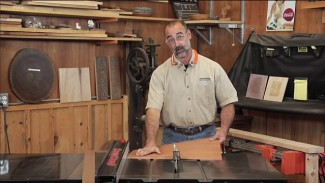If you’ve been considering what tool to put in your shop next, and looking at the wide array of choices, you’ve probably wondered if you need a bandsaw, and what are bandsaws used for? We’re here to help you out by letting you know what kind of work bandsaws can do, which will help you decide on whether or not this tool is a good match for you and your woodworking projects.
Versatility
One thing most woodworkers love about bandsaws is their versatility. From cutting curves in delicate material to ripping logs down to manageable planks to cutting non-ferrous metals, bandsaws can perform a wide array of tasks for you. Need a way to cut really thick material? Need to cut a huge bowl blank round before it goes on the lathe? Want to make dovetails? Bandsaws can do all this and more. Of course, in addition to knowing what bandsaws are used for, you’ll need to know how to use a bandsaw, and WoodWorkers Guild of America has you covered there, too.
Buying Advice
Here at WoodWorkers Guild of America we know that your tool choices are very important to you, and we want to help you make good buying decisions. We are determined to provide buying advice you can use, and will do whatever we can to simplify your tool buying decisions.





Where can I find band saw model comparisons to figure out the best one for my small shop? The text describing this video included: ” We are determined to provide buying advice you can use, and will do whatever we can to simplify your tool buying decisions.” A very intriguing comment that suggests the possibility of help and buying advice somewhere on this site as I consider what model of band saw would be best for me. Where can I find a buying guide?
What is drift and why does it occur.
Drift on a bandsaw is the tendancy to cut in a line that is not perpendicular to the front of the saw. As to why it occurs, that is a good physics question, and has to do with how the blade is riding on the wheels. In many cases if you get the blade tracking so that the gullet of the teeth are positioned over the center of the wheel, and get the blade tensioned properly, the drift can be eliminated. If some drift remains, its not a problem, just adjust your fence so that it aligns with the natural cut direction of your bandsaw and it will work fine.
Do you have a video on trimming lumber or sections of trees for lathe bowl turnings
Thanks for the question on what is arguably the most fun of all types of woodworking. Yes, we have a number of videos on this topic. If you use the search function in the upper right hand corner of the web site, you will find several videos on this topic, including this one that we recently added:
https://www.wwgoa.com/video/how-to-cut-bowl-blanks-from-logs-009264/
We also recently added an online class that you might want to check out that covers this process: https://www.wwgoa.com/class/master-bowl-turning/
Any suggestions for a starter? I.e., stand upright or bench mounted, throat width or max thickness?
Great question. Like many aspects of woodworking, the answer here is “it depends”. In this case, it depends on what you hope to do with your band saw. If you primarily need a tool to make curved cuts on 2″ or less stock, and the saw will see less than a couple hours per week, then a 9-10″ benchtop bandsaw might suite your needs fine. If you want to do some occasional resawing, then I’d suggest a minimum of a 14″ bandsaw with 12″ height (this often requires a riser block on traditional American style bandsaws). If you want to do a lot of resawing, then I’d suggest a Euopean style bandsaw with a 2HP or larger motor, and as much height capacity as you need.
If you think you will be using it much at all, I’d encourage you to think about getting a minimum of a 14″ (wheel size) saw with at least a 3/4″ motor, which would typically be a freestanding stationary tool. This will provide you great versatility and plenty of power for typical furniture projects.